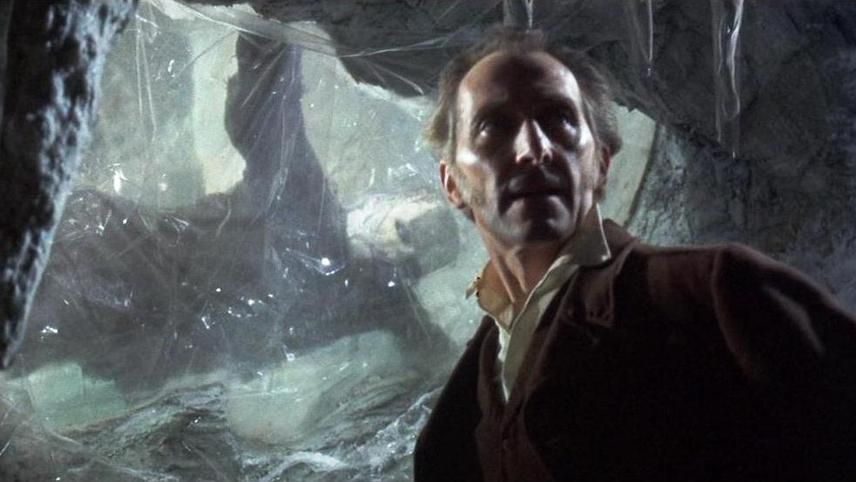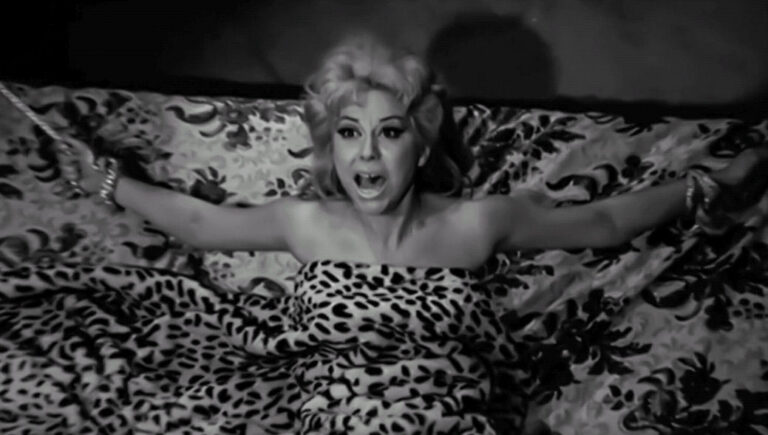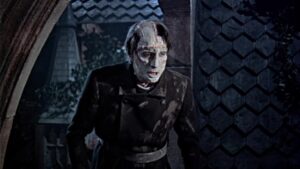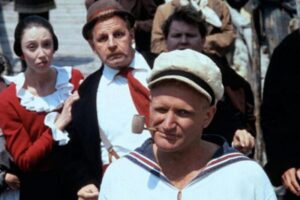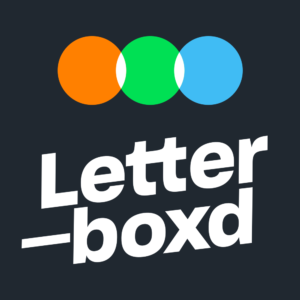Directed by Freddie Francis
Written by Anthony Hinds
Starring:
- Peter Cushing as Baron Frankenstein
- Peter Woodthorpe as Zoltan
- Duncan Lamont as Chief of Police
- Sandor Elès as Hans
- Katy Wild as Beggar Girl
- David Hutcheson as Burgomaster
- James Maxwell as Priest
- Howard Goorney as Drunk
- Kiwi Kingston as The Creature
Rating: ![]()
Of all Hammer’s reimaginings of the Frankenstein mythology, The Evil of Frankenstein (1964) remains its most unruly and eccentric outlier—a flamboyant, buffoonish concoction that ruptures both aesthetic continuity and narrative logic in its gleeful hybridization of the Universal and Hammer legacies. What emerges is not so much a sequel as a cinematic mutation: the film bears the anatomical parts of its predecessors, but assembles them with such wild improvisation that the resulting creation is almost more monstrous than Frankenstein’s creature itself. It is kitschy, erratic, and often overlooked, yet in its indomitable chaos lies one of the most bizarre and strangely compelling Frankenstein films ever committed to celluloid.
By the early 1960s, Hammer Films had solidified its reputation as Britain’s foremost purveyor of Gothic horror. What Universal had represented to 1930s Hollywood horror, Hammer now was for postwar Britain. In the earlier entries of its Frankenstein cycle, Hammer artfully circumvented Universal’s copyright by crafting its own vision—eschewing Jack Pierce’s iconic square-headed monster in favor of a more skeletal, zombified interpretation, often emphasizing psychological intensity over the mythic grandeur of the source material. Yet The Evil of Frankenstein represents a deliberate departure from this trajectory. With Universal co-financing for the first and only time, Hammer was finally granted access to the classic Frankenstein iconography—and they seized it with irreverent, riotous abandon.
The film becomes, in essence, a conceptual chimera. Drawing narrative inspiration from Frankenstein Meets the Wolf Man and visual cues from Pierce’s iconic makeup design, it amalgamates two opposing horror traditions. Yet the synthesis is less a seamless fusion than a collision: narrative continuity is jettisoned, Terence Fisher is temporarily replaced by the more pictorially minded Freddie Francis, and screenwriter Anthony Hinds resurrects a long-abandoned television script. It is a Frankenstein film where everything has changed—except Peter Cushing, whose dignified, acerbic performance as Victor Frankenstein remains the film’s gravitational anchor.
Cushing’s Doctor is, by now, more renegade than genius: a persecuted heretic whose experiments have rendered him a nomadic pariah. Exiled from every town he enters, Frankenstein returns to Karlstaad, the site of his original disgrace, hoping to find anonymity. Instead, he discovers a society that has not only remembered him, but profited from his ruin. A corrupt burgomaster has plundered Frankenstein’s estate; the villagers whisper his name like a curse. The world has moved on—but Frankenstein, unrepentant and embittered, has not.
The film’s plot is an unstable assemblage of narrative contrivances, but it wears its absurdity with infectious confidence. A deaf-mute vagabond girl, an opportunistic hypnotist named Zoltan, a frozen creature rediscovered in a mountain cavern—all contribute to a story that lurches between Gothic melodrama, satirical farce, and proto-exploitation horror. At times, it veers into near-theological allegory: the Reverend’s opening tirade against Frankenstein frames science and religion as antagonistic forces, culminating in a blasphemous moment when Frankenstein strangles the priest—a symbolic as well as literal throttling of ecclesiastical authority. Yet the film, to its credit, never settles for solemnity. Its black humor is gleeful and unrepentant, and its satire of bourgeois hypocrisy—embodied by the kleptocratic elites of Karlstaad—is bitingly effective.
Visually, The Evil of Frankenstein is a carnival of color and theatrical excess. Freddie Francis, one of cinema’s great cinematographers, brings a painterly eye to the proceedings. His direction favors mise-en-scène over narrative logic, indulging in bold hues, baroque compositions, and visual spectacle. While the story meanders, the film remains constantly watchable—precisely because it treats its material as a stylistic playground rather than a coherent mythos.
And yet, amid the camp and chaos, there emerges a surprisingly tender emotional thread. Kiwi Kingston’s portrayal of the monster—visibly inspired by Karloff but never a slavish imitation—offers quiet pathos. His scenes with the deaf-mute girl, played by Katy Wild, are genuinely affecting. Stripped of dialogue, their interactions convey an intuitive empathy that transcends the lurid absurdity surrounding them. In a film otherwise steeped in irony and theatricality, this brief humanist interlude is startling in its sincerity.
The Evil of Frankenstein is a film at war with itself: a Frankenstein story that satirizes its own lineage while striving, paradoxically, to revive it. It is structurally incoherent, thematically overstuffed, and stylistically indulgent—and yet, it exudes a chaotic brilliance that makes it difficult to dismiss. If one approaches it not as a traditional sequel, but as an audacious détournement of the Frankenstein myth, its peculiar genius becomes clearer. For all its failings, it is one of Hammer’s boldest and most idiosyncratic statements—mad, uneven, and unforgettable.
